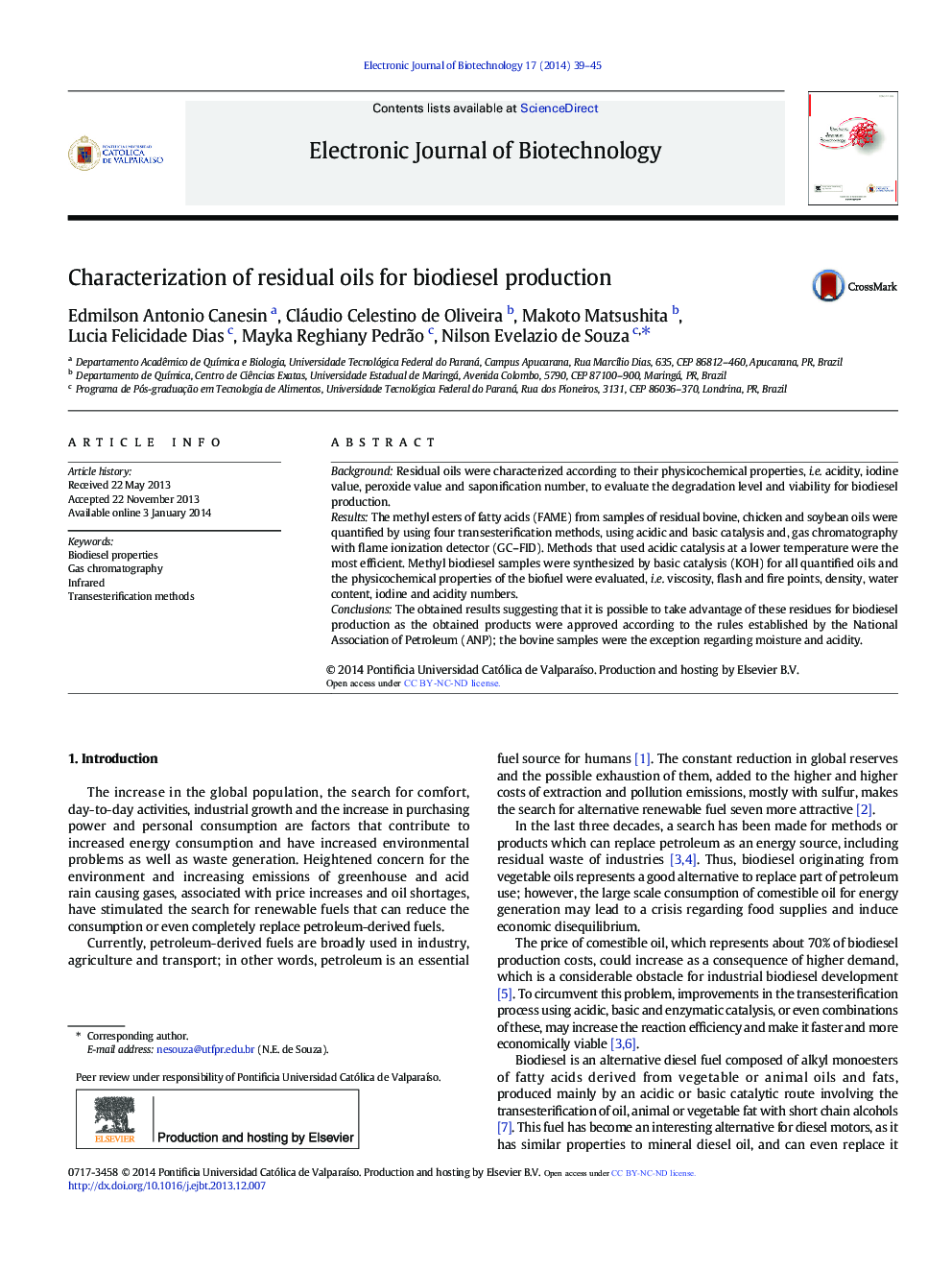| Article ID | Journal | Published Year | Pages | File Type |
|---|---|---|---|---|
| 200837 | Electronic Journal of Biotechnology | 2014 | 7 Pages |
BackgroundResidual oils were characterized according to their physicochemical properties, i.e. acidity, iodine value, peroxide value and saponification number, to evaluate the degradation level and viability for biodiesel production.ResultsThe methyl esters of fatty acids (FAME) from samples of residual bovine, chicken and soybean oils were quantified by using four transesterification methods, using acidic and basic catalysis and, gas chromatography with flame ionization detector (GC–FID). Methods that used acidic catalysis at a lower temperature were the most efficient. Methyl biodiesel samples were synthesized by basic catalysis (KOH) for all quantified oils and the physicochemical properties of the biofuel were evaluated, i.e. viscosity, flash and fire points, density, water content, iodine and acidity numbers.ConclusionsThe obtained results suggesting that it is possible to take advantage of these residues for biodiesel production as the obtained products were approved according to the rules established by the National Association of Petroleum (ANP); the bovine samples were the exception regarding moisture and acidity.
